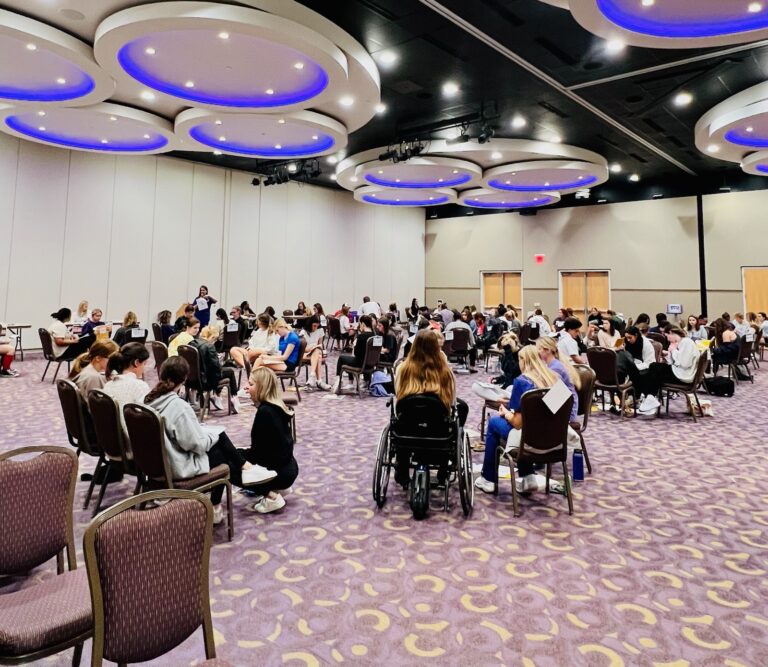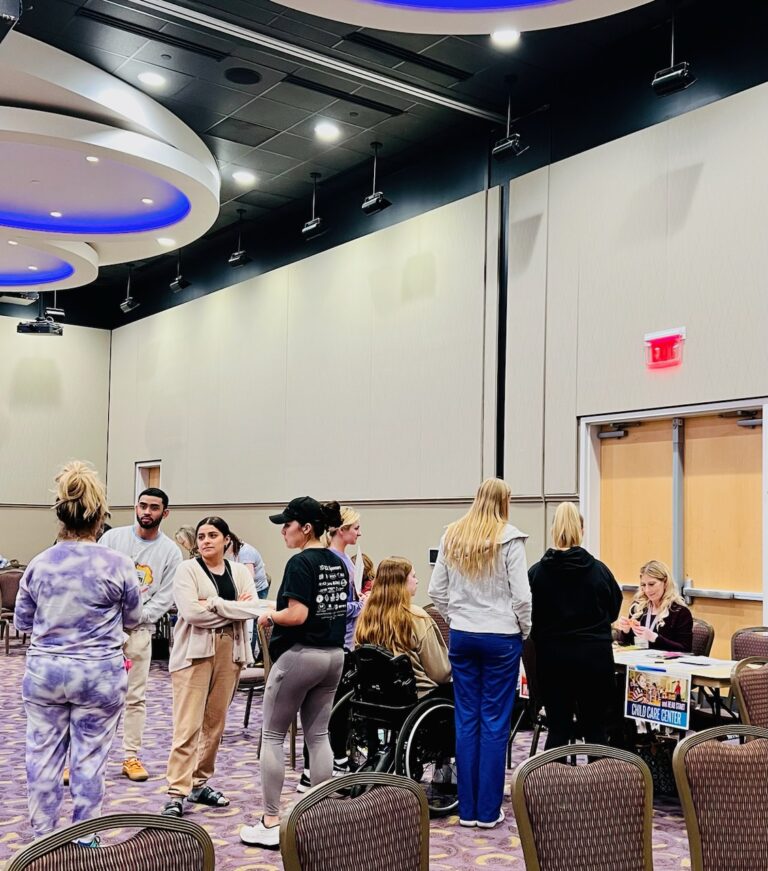
Harris College students recently became sensitized to the day-to-day realities of life faced by people with low incomes through a poverty simulation. The experiment offered students an opportunity to consider how working within interprofessional and interdisciplinary teams might help them to deal more effectively with people living in poverty. The three-hour simulation demonstrated what it’s like to be part of a low-income family surviving month to month. Students were assigned to a family unit and provided with identification documents, possession, sources of income, bills and various other items needed to survive the “month.”
Facilitators reinforced the fact that the experiment was a simulation, not a game. Poverty is not a game for the over 38.1 million people living in poverty, US citizens whose lifestyles were simulated.
- Poverty for a family of four means having an income below $25,780
- 6% of men and 12.9% of women are living in poverty in the US
Participants were asked to be as realistic as possible about their role by thinking like a person facing poverty would think and act like the age and position assigned to them. Here are some of their experiences.
Kamila LaFavor
Social Work undergraduate student
I honestly didn’t know what to expect. I completed the inventory for the character kits to ensure they were ready for the simulation, and some things reminded me of the personal experiences I lived. I became a single mother at 18 and struggled through my early 20s to support my son.
I realized the simulation was not a game, but I never thought it could invoke so many emotions for me. The utility shut-off notices and school supply and field trip requests requiring money brought back difficult memories.

There were five people in my family unit, including my real-life daughter, who also participated in the simulation. My family unit was comprised of two parents and three children. I played the working mother who was married to a man who was laid off. Our children were 8, 10 and 16 years old. My real-life daughter played the 16-year-old who happened to be seven months pregnant. Having truly lived through similar experiences, I found myself taking care of and directing everyone on what they needed to do so our family could make it through the “month.” When our utilities got shut off, I became upset because even though utilized the resources available to us, we still experienced a disconnection. I was also upset with the father of my unborn grandchild, pressing the young man and his family for help in supporting the baby that was added to our household. At this point, I realized I was flashing back to my own personal experience and needed to get back into character. I feel that many participants could have taken the simulation a little more seriously, but I understand that most of them have never lived under those types of conditions. It felt good sharing my experience with everyone in the debrief.
After the simulation, I realized that I lived in poverty for much longer than I thought that I had. There were many years when I waited for income tax season so I could have some extra money, and many years passed before I could treat my family to a real vacation. The simulation proved that poverty is still a reality for many people and needs a solution. Many children face food insecurity every day and are unable to focus on school. Many children act out in class because of housing insecurity.
A fellow social work classmate, Sydney Sanders, mentioned, “We need to stop putting a band-aid over poverty through programs and get to the root cause by making changes to policies.”
I don’t believe truer words have ever been spoken. I would encourage others to not look down on anyone unless they are helping them get up. Often, people have a preconceived image of what homelessness looks like, but the depiction isn’t always accurate.
This experience taught me the power of social capital and networking. As a young adult, I did not know how to ask for help and I was not aware of all the resources available.
Now, I feel even more empowered in my role as a social worker to make real a difference in people’s lives.
Jean-Franco Rivera-Pérez
Assistant Professor, Davies School of Communication Sciences & Disorders
In this year’s poverty simulation, I portrayed the police officer. My role was to look for illegal activities that might be taking place within the community, allowing me a glimpse into the experiences lived by low-income families trying to survive from month to month. This activity provided the students an opportunity to understand the importance of social determinants and their impact on an individual’s life.
This experiment was not just about economic stability but also the direct and indirect impact on discrimination, violence, racism, and health care access.
As a faculty member, this experience helped me to understand the social, economic and political interaction and the cause and effect in an individual that comes from a low-income household. Poverty is more complex than what individuals with privilege can imagine. Other social factors such as gender, disability, race and ethnicity also play an important role as certain groups frequently suffer inequality and are more vulnerable to receiving inadequate health services and educational opportunities. An important issue that arose was the criminalization of poverty and how that negatively impacts the relationship between the police system and the community experiencing poverty. As the “police officer”, I witnessed participants leaving their children at home alone so that they could go to work, or even partake in criminal activities like stealing or selling “drugs” to survive.
To help fight homelessness, I believe everyone has to reject the stigmas associated with poverty and homelessness. We all must understand that homelessness is oftentimes not a choice, and we should seek to understand the contexts surrounding their experiences.
I believe this activity helped students understand the importance of advocating for those who are experiencing poverty and homelessness and advocating to defuse negative attitudes about homelessness and provide better housing strategies.
This was the first year that a larger total number of students was attempted. Last spring’s simulation had approximately 70 students, this year, there were over 150 students over both nights. The experience was executed over two nights and could not have happened without the faculty and volunteers. This is the second perspective in a series of three.
Did you miss Part One? Read Part One. Read Part Three.